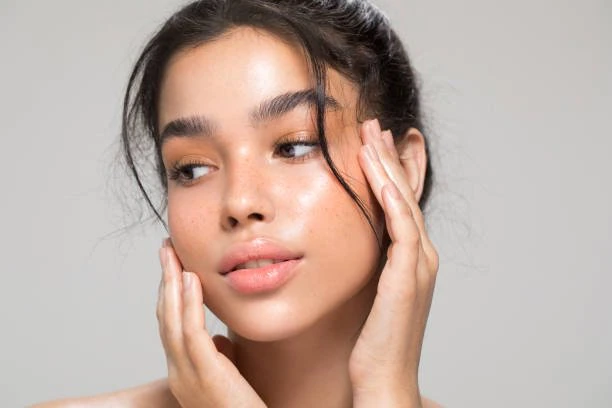
For some time now, a new mainstay has appeared in the world of corrective products. It is a “primer” for the “perfect finish” of the skin’s surface. Let’s discover it together!
What Is a Primer?
As the name suggests, a primer is a cosmetic product applied after your daily skincare routine. In fact, after using a face cream, you can move on to the application of this beneficial product.
Primer is a true perfector of the skin’s surface, coming from a transparent gel, mousse, or spray. It covers pores and fine lines and contains silicone extracts and soft-touch pearls to help tighten pores.
But that’s not all. This product, with its magical powers, is also an excellent fixer that allows makeup to stay put for longer.
The use and marketing of primers is a very recent phenomenon, but their discovery goes back much further! Women used to mix cream and loose powder to even out their faces and prolong the time of their most demanding makeup applications.
The secret to long-lasting makeup base effectiveness and a flawless finish is a minimal application and quick fingertip movements.
How Do I Choose a Primer?
Not all primers are the same.
Primers suitable for all skin types: The most commonly used primer for the face is a transparent “wild card” liquid that is gel-like and adapts to all needs.
Combination and oily skin: In this case, it is advisable to choose a mousse primer with a matte or matte effect, as it helps to reduce the appearance of pores and eliminate shine on the face.
Choose green to eliminate redness, beige/peach to eliminate purple imperfections, orange to balance blue pigmentation, lavender to correct yellow discoloration caused by pollution, and pink to eliminate signs of fatigue.
Dry Skin: If the epidermis is particularly dry, it is advisable to check the composition and choose a spray primer that contains vitamins and collagen.
Greenish skin: If you have gray skin, it is recommended to choose a pink-pigmented product to help erase gray hairs.
Clear skin: For very light complexions, a light-effect primer that gives a sophisticated moon glow is a strong choice.
Whichever primer you choose, remember that this type of product is not particularly opaque. When you want to hide skin blemishes and prominent dark circles, turn to a good concealer!
And to create a nude makeup look, a primer with good holding power and perfection is the best choice.
How to Apply Face Primer?
You can use your fingertips, a sponge, or a makeup brush. The easiest way is to use the fingertips of your hands and apply and spread with light, quick movements. Once dry, you can continue applying foundation, powder, and base. There is also a primer stick on the market that is ideal for creating a base for makeup.
Eye Primer
In addition to face primers, there are special products designed to intensify the color of your makeup and improve the hold of pencils and eyeshadows. For instance, eye primers fix eyeshadows and are essential for more complex eye makeup. Eye primers are especially recommended when eye shadow inevitably gets into the crease of the eyelid, when the eyelid is unevenly colored, or when makeup is applied from morning to night.
Tips for Applying Eye Primer Correctly
– Apply a minimal amount of product as evenly as possible on the eyelid to prevent color spots.
– Wait a few seconds before continuing with makeup.
– Finish the pencil or eyeshadow carefully and precisely.
Lip Primer for a Voluminous Effect
Lip primer is ideal for those looking for a full and well-defined lip contour without lipstick deposits and long-lasting. This particular product is used to smooth the surface of the lips before applying color, for a kiss-proof volumizing effect!
Tips for Applying Lip Primer Correctly:
– Practice a light scrub before applying primer to remove cracks and cuticles that take away brightness and where lipstick would build up.
– Apply primer to lips without any product.
– If you have chapped lips and have used lip balm, let it dry completely first using a tissue.
Let us know if these few tips have helped you in the comments below!



